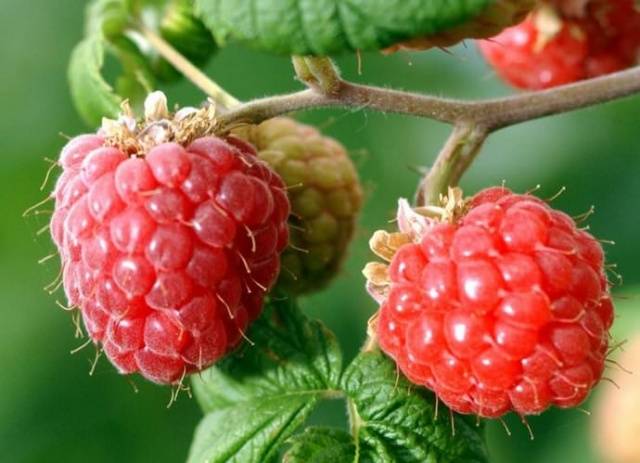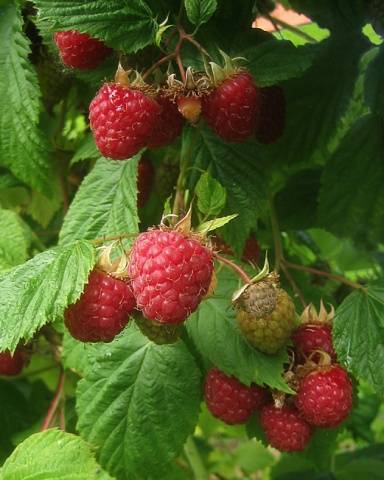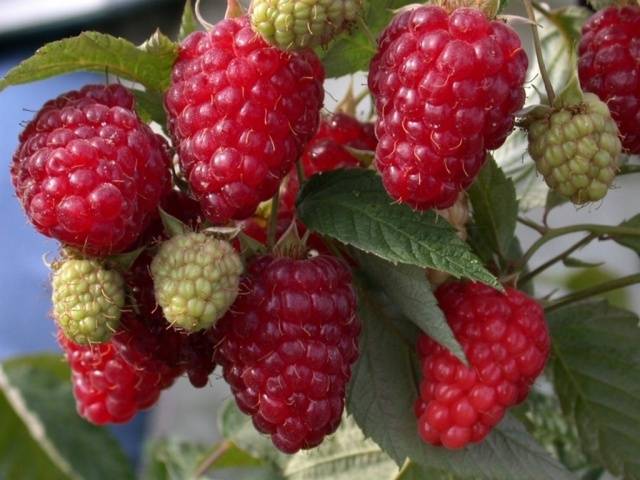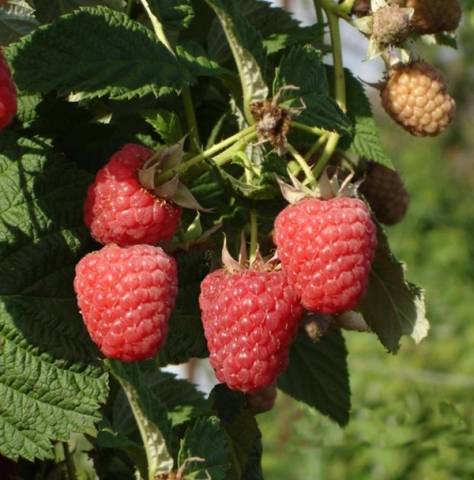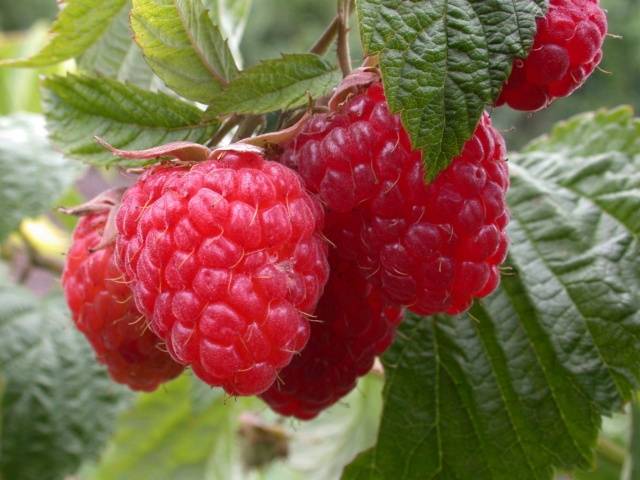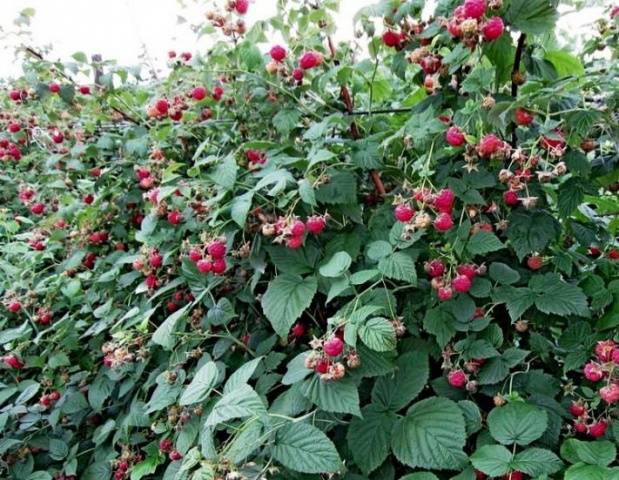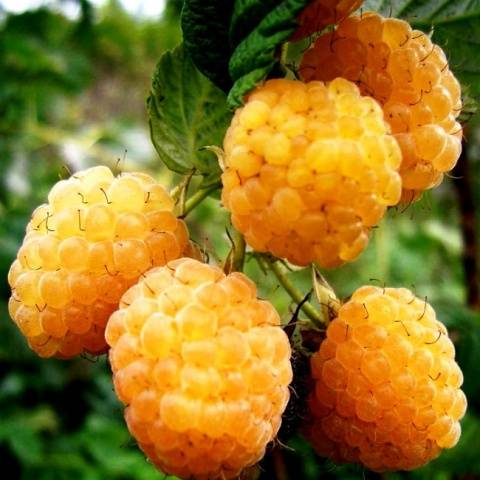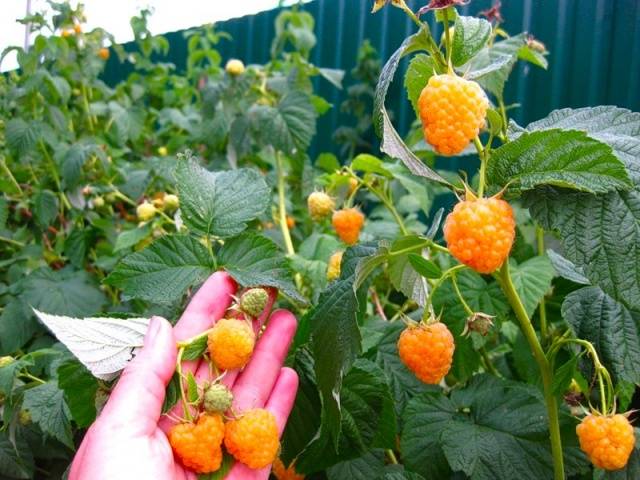Content
Raspberry varieties for Siberia are selected based on certain characteristics: berry size, frost resistance, yield, ability to withstand diseases and pests.
The best raspberry varieties for Siberia
For planting in Siberia, raspberries are suitable, which ripen in the early, middle or late period. The best raspberries taste great and produce large fruits.
Siberia also grows yellow raspberrieswhich has a milder taste. Repaired varieties allow you to harvest several raspberry crops per season.
Early varieties
Early ripening raspberries yield in July. Most of these varieties are adapted to Siberian conditions and are capable of producing a good harvest.
Vera
Early ripe raspberry Vera reaches 1.5 m in height. The bush is formed by the third year after planting. The plant is semi-spreading and medium-sized.
Berries weighing 3-4 g have a juicy and aromatic pulp. Up to 2 kg of yield is obtained from one bush. The Vera variety is not subject to long-term transportation, since the fruits tend to crumble.
Early sweet
Raspberry Early sweet is winter-hardy. The bush forms small, but very sweet, round-conical berries. This variety is considered one of the best due to its dessert taste and pronounced aroma.
The bush grows tall and sparsely. Annual shoots are straight at the base, and bend towards the top in an arc. Plants require additional treatment for diseases.
Kuzmin's news
One of the oldest varieties of raspberries, developed in the 19th century, is Kuzmin's news... Its berries have a pale red hue and a faint aroma. The pulp is very juicy with a sweet and sour aftertaste. Such raspberries are not transported, but are processed immediately after collection.
Kuzmin's news grows up to 2.5 m. The bushes can withstand winter frosts down to -25 ° С. Yields are average.
Hussar
The plant forms powerful shoots, the height of which reaches 2.5 m. Due to its good strength, the shoots do not require additional support. The thorns are located at the base of the branches, so they do not interfere with harvesting.
The Gusar variety gives medium-sized fruits weighing about 4 g. The fruits are distinguished by a sweet and sour taste and a bright aroma. Assembled raspberries cannot be stored or transported.
Meteor
Meteor grade forms powerful bushes, medium-sized and erect. Small thorns are present on the shoots. Meteor is prized for its dessert taste and resistance to frost and disease. However, it is required to additionally process plantings from gall midges and spider mites.
The weight of the berries reaches 2.5-3.2 g, their shape is blunt-conical. The fruits are attractive in appearance and tolerate transportation.
Aboriginal
The Aboriginal variety is distinguished by stable yields and large fruits. Fruit weight is 5 g, some specimens reach 8 g. The berry is dense, conical and light red in color.
Bushes of the Aboriginal variety grow up to 1.5-2 m. The plant is formed upright and spreading. The variety is resistant to fungal and viral diseases. They cover raspberries for the winter, but even after freezing, they form many shoots.
Medium varieties
Raspberry varieties for Siberia of medium ripening are distinguished by large fruits and resistance to diseases. Under a high layer of snow, the plants tolerate the Siberian winter well.
Shiny
Raspberry Shiny forms a medium-sized bush up to 1.5 m tall. The tendency to form shoots is rather low; thorns are present only on the lower part of the branches.
The variety is considered to be resistant to drought, pests and diseases. The berries are dark in color and taste good. Fruit weight is 2.5 - 5.5 g. Brilliant is suitable for growing in Western and Eastern Siberia.
Reward
Variety Award differs in medium early ripening and high yields. The bushes are semi-spreading and medium-sized. The thorns are located side by side at the base of the shoots.
The fruits of the Nagrada variety are medium in size, dull in color and oval-conical in shape. The mass of berries is 2-3 g. The variety is considered dessert, has a weak aroma. Raspberries cannot be transported.
Siberian Ogonyok
The Ogonyok Sibirskiy variety gives stable good yields. The berries are sweet in taste, weighing 2.5 - 3.5 g. The bushes need constant access to moisture, so watering is an obligatory part of the care.
On the bushes, 10-15 shoots are formed, which grow strongly. Spark Sibirskiy is resistant to severe frosts and viral diseases.
Tarusa
Raspberry Tarusa is a standard type variety, since it forms powerful shoots, similar to a tree trunk. The height of the shrub is no more than 1.5 m. The variety is resistant to diseases and pests.
The fruits of Tarusa are large and weigh up to 10 g. Taste qualities are assessed as average, therefore the variety is more often used in harvesting. Up to 4 kg of fruits are removed from the bush.
Late varieties
Late ripening varieties yield in August. Among them are large-fruited varieties that give a good harvest. You can choose the appropriate option by the photo and description.
Stolichnaya
The Stolichnaya variety brings large berries weighing from 4 to 8 g, pronounced red and elongated. After ripening, the fruits do not crumble for 3-4 days.
Stolichnaya gives little growth. The height of the bush reaches 1.5 - 2 m. There are no thorns on the shoots. The plant is resistant to frost and is considered unpretentious.
Mirage
Sadovaya Raspberry Mirage forms medium-sized bushes up to 3.5 m in height. The tendency to form shoots is assessed as weak. The thorns are rather soft, with a darkish coloration.
The berries are large and elongated. The pulp has a sweet and sour taste and a pronounced aroma. Each bush can be harvested up to 4.5 kg of fruit.
Brigantine
Brigantine variety grows up to 2 m, is erect with an average ability to form shoots. Raspberries tolerate severe winters under snow cover. Scarce thorns are located at the base of the shoots.
The brigantine requires preventive treatment for purple spot. The berries have a weight of up to 3.2 g, a rounded conical shape and a sweet and sour taste.
Repaired varieties
Remontant varieties include varieties that are capable of continuous fruiting throughout the growing season. The largest crop is harvested during the second ripening wave.
Unattainable
Raspberry Inaccessible is a compact plant up to one and a half meters high, has a tendency to thicken. Shoots differ in standard structure, there are thorns.
The berries grow large, weighing up to 7 g, medium density and blunt-conical shape. The berries taste sweet, the aroma is poorly expressed. Inaccessible is considered one of the best varieties, which does not require special care and ripens earlier than other varieties (from July 20).
Hercules
The Hercules variety is a tall shrub (up to 2 m), not prone to the formation of a large number of shoots. Raspberries are resistant to fungal diseases.
Raspberry fruits grow large, with a pleasant taste and pronounced aroma. The average weight of the berries is 7 g, some specimens reach 15 g. Raspberry varieties Hercules can be transported. Up to 3 kg of fruits are harvested from one shrub.
Indian summer
Indian summer variety differs in spreading bushes of medium size. Erect shoots are prone to branching. Plants can withstand temperatures as low as -24 ° C. Raspberries are resistant to gray mold, but require additional protection against powdery mildew and spotting.
Fruits weighing up to 3.5 g are dark in color. The pulp of the berries has a delicate sweet and sour aftertaste. Up to 3 kg of raspberries are removed from one bush.
Bryansk Divo
The high-yielding raspberry Bryanskoe Divo allows you to collect up to 3.5 kg of fruits from the bush. The berries weigh 7 g, some of them reach 11 g.
Malina Bryanskoe Divo has an elongated fruit shape and good density. The variety stands out for its long-term fruiting, which begins at the end of August and ends with the onset of frost.
Gift of Siberia
Raspberry Dar of Siberia is a powerful plant, the height of which reaches 2.8 m. Thorns are located along the entire length of the branches. The inflorescences that appear at the bottom of the bush can be pinched off. Then larger berries will appear on the rest of the plant.
The fruits are hemispherical and brightly colored. The yield per bush reaches 4.3 kg. The plant is resistant to frost and disease.
Yellow varieties
Raspberries of yellow varieties rarely cause allergies and have excellent taste. Compotes, juices and preserves are prepared from it. Yellow raspberries tolerate winter frosts better, and their fruiting period is extended over time.
Runaway
Large-fruited raspberry runaway it stands out for its early ripening and high yield. The bush is medium-sized and slightly spreading. The plant rarely suffers from diseases and pest attacks.
The fruits have a rounded cone shape and golden color. The pulp has a delicate sweet and sour taste and weak aroma. The average fruit weight reaches 2.7 g.
Yellow Giant
Variety raspberry yellow giant differs in sweet yellow berries. The weight of the fruits reaches 8 g. Since the fruits are soft, they cannot be transported.
Shoots grow tall (up to 2 m) and powerful. The plant is able to withstand winter frosts down to -30 ° C. The yield of the Yellow Giant is moderate but stable.
Yellow Spirina
The variety Yellow Spirina forms a powerful and upright bush up to 1.5 m high. Thorns are located along the entire length of the branches.
The plant is characterized by low winter hardiness and requires shelter for the winter. The weight of the fruits reaches 4 g, they have a blunt-conical shape and a sweet and sour taste.
Gardeners reviews
Conclusion
The varieties bred by domestic specialists take root best in Siberia. This includes both old, well-deserved varieties, and the results of selection of recent decades. You should also pay attention to remontant varieties of raspberries, which give several harvests per season.
